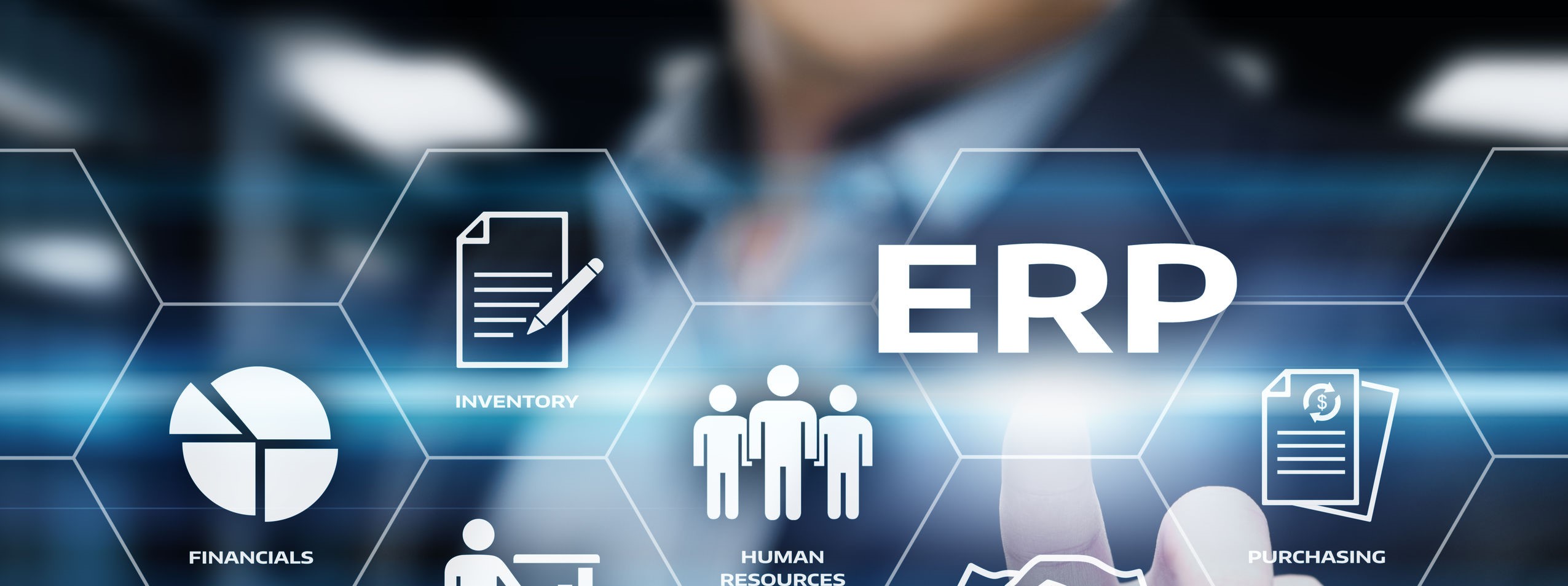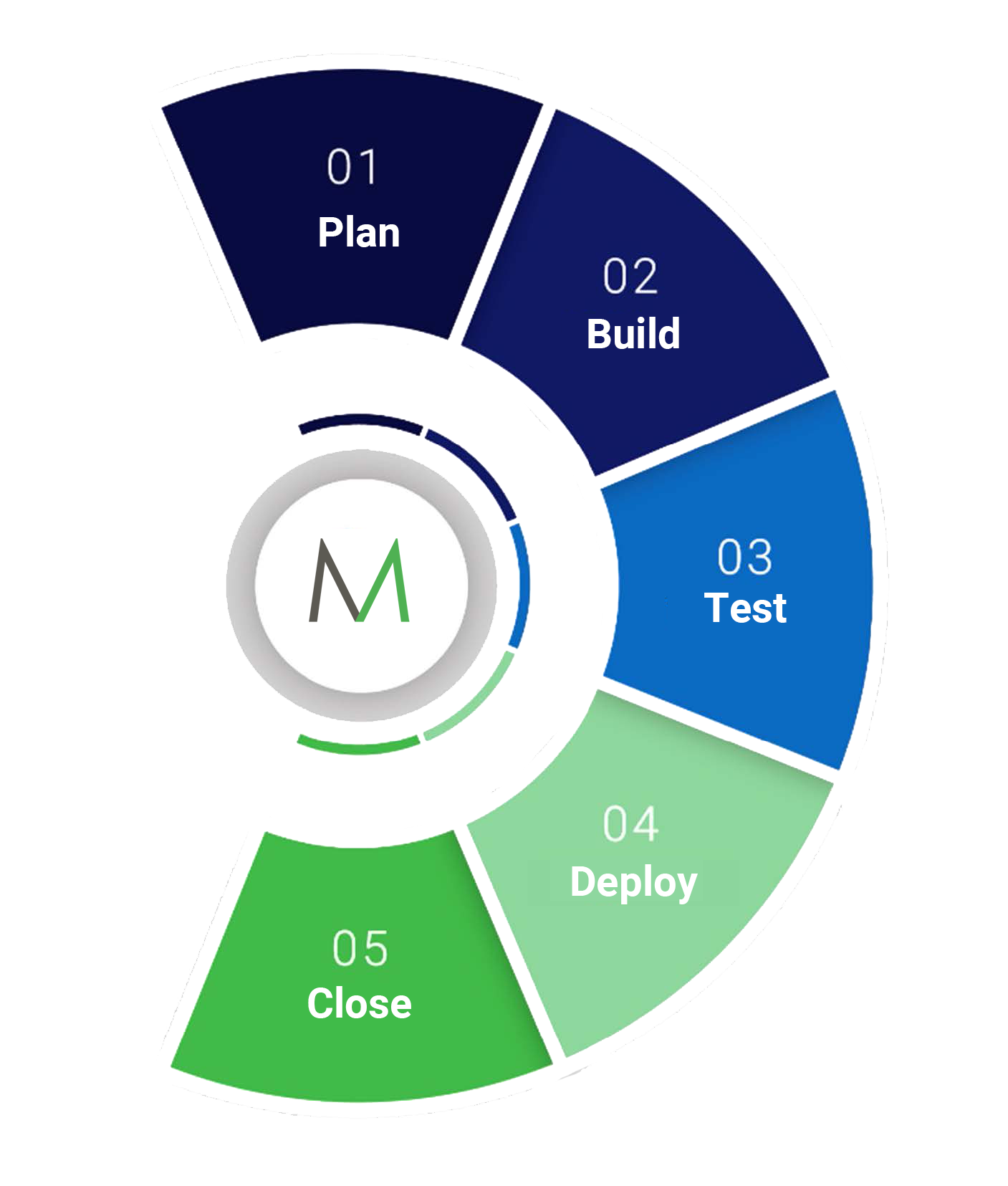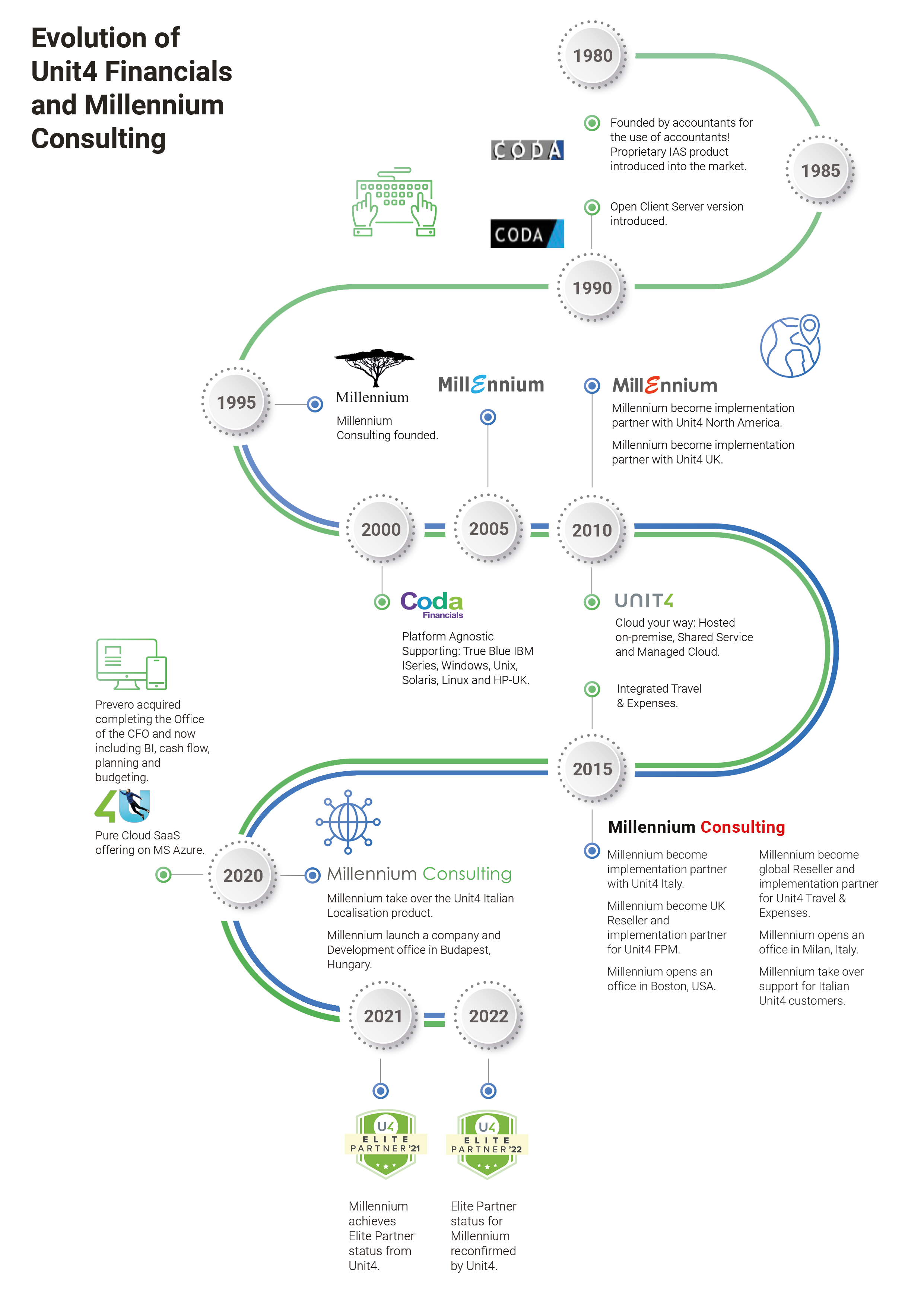Budget 2020 and the government's support package: What it means for UK tech

Budget 2020 and the government’s support package: What it means for UK tech
March 1st, 2020
Rishi Sunak’s first Budget was remarkable for several reasons. The first was its sheer scale, including an estimated £30bn of coronavirus-related stimulus. The second was the speed at which the package was overtaken by events.
Less than a week after the Budget was delivered, the government announced a £350bn package of grants and loan guarantees designed to help see businesses through the crisis. Next came a scheme for the government to pay the wages of furloughed employees, followed by similar arrangements for the self-employed: spending commitments that are expected to top £75bn.
But alongside the headline announcements and the unprecedented support package that followed it, the Budget (and subsequent announcements) also contained a number of provisions directly relevant to the UK’s tech sector. Here’s a roundup of what you may have missed…
IR35 changes pushed back by one year
With independent contractors forming such a significant part of the UK’s tech sector workforce, the proposed changes to the off-payroll working legislation (IR35) has been a cause of considerable concern.
IR35 is meant to address the perceived problem of ‘disguised employment’, whereby workers operate notionally as independent contractors and bill for their services via an intermediary (usually a limited company), resulting in a lower tax and NI liability. However, Many tech firms routinely use contract labour to help de-risk their business models as a flexible way to plug temporary skills gaps.
Originally, changes to IR35 impacting large and medium-sized private sector organisations were due to come into force on 6 April 2020. These changes shift the responsibility for determining a worker’s employment status from the contractor to the hirer. It’s a big burden for many firms – and reports suggested that many employers and contractors were simply not prepared for it.
Welcome news came shortly after the Budget, when it was announced that these IR35 changes have been pushed back until April 2021. Be warned though: the Business Secretary, Steve Barclay made it clear that this decision was “a deferral, not a cancellation, and the government remains committed to reintroducing this policy”.
Rishi Sunak’s first Budget was remarkable for several reasons. The first was its sheer scale, including an estimated £30bn of coronavirus-related stimulus. The second was the speed at which the package was overtaken by events.
Less than a week after the Budget was delivered, the government announced a £350bn package of grants and loan guarantees designed to help see businesses through the crisis. Next came a scheme for the government to pay the wages of furloughed employees, followed by similar arrangements for the self-employed: spending commitments that are expected to top £75bn.
But alongside the headline announcements and the unprecedented support package that followed it, the Budget (and subsequent announcements) also contained a number of provisions directly relevant to the UK’s tech sector. Here’s a roundup of what you may have missed…
IR35 changes pushed back by one year
With independent contractors forming such a significant part of the UK’s tech sector workforce, the proposed changes to the off-payroll working legislation (IR35) has been a cause of considerable concern.
IR35 is meant to address the perceived problem of ‘disguised employment’, whereby workers operate notionally as independent contractors and bill for their services via an intermediary (usually a limited company), resulting in a lower tax and NI liability. However, Many tech firms routinely use contract labour to help de-risk their business models as a flexible way to plug temporary skills gaps.
Originally, changes to IR35 impacting large and medium-sized private sector organisations were due to come into force on 6 April 2020. These changes shift the responsibility for determining a worker’s employment status from the contractor to the hirer. It’s a big burden for many firms – and reports suggested that many employers and contractors were simply not prepared for it.
Welcome news came shortly after the Budget, when it was announced that these IR35 changes have been pushed back until April 2021. Be warned though: the Business Secretary, Steve Barclay made it clear that this decision was “a deferral, not a cancellation, and the government remains committed to reintroducing this policy”.
Discover the latest Unit4 Financials features in V14
February 2020
Discover the latest Unit4 Financials features in V14
This post shares all the functionality available on Unit4 Financials V14. If you are upgrading from an older version of Financials, you will get all of the below features plus all the very latest features from V13, V2020 and Continuous Release.
If you are on V14 remember that at end of 2022 it will fall outside the Unit4 supported software window. If you don’t upgrade before that date, you may incur extended support charges from Unit4.
Now may be an ideal time to look at the options that are available to you and the benefits you will gain from an upgrade.
Element Workflow
To ensure the accuracy of master data and minimise the risk of fraudulent creation or modification of key master data, capabilities have been added for creating and approving master data.
Flexi-Fields
The Flexi-field capability at element level has been extended to transaction level, which allows you to capture unlimited amounts of business-specific dimensions, perform more detailed analyses and calculate more detailed KPIs and intelligence, in order to support both strategic and operational decision making.
Billing
Replacing the legacy e-billing module, the new billing module is fully integrated with the core of the financials framework.
Financials new features:
- Element Authorisation
-
- Element authorisation rule master
- Element authorisation workflow process
- Import/export of element authorisation rules
- Flexi-fields for finance transactions
- Transaction Flexi-fields in table link
- Browse ledger and aged analysis
- Multiple attachments for finance documents
- Assisted element template.
- Identification of cancelled transactions
- Input–derived fields
- Revaluation chain – dates
- Intercompany – copy attachments
- Reconciliation – scroll folders independently
- Currency write-offs
- Element finder – IBAN code now added
- Pay proposal codes – now display the full proposal code
- Payment reference number
- Unique payment reference generation
- Matching – write-off tolerances now defined in home, dual and matching currency
Administration New Features:
- Capability by company
- Inactivating users - active until date specified on master
- Change password and locked users
- Password parameters – specify number of uppercase and lowercase
- Diary notifications and scheduled task
- Scheduled Tasks: Allocation, allocation chain, balance audit, currency revaluation chain, currency revaluation rule, diary notifications, document audit, generate pay/collect proposal, generate reminder letters, intercompany processing, table link document load, table link element load and tax transfer
- E-mails subject and sender configuration in workflow
- Menu content provider - enables you to store defaults for selectors and presenters
- Downloads – downloads section on administration console, print formatter and workflow designer
- Application header text - define application header text in application parameters
A painless Unit4 Financials upgrade starts here
If you are on V14 remember that at end of 2022 it will fall outside the Unit4 supported software window. If you don’t upgrade before that date, you may incur extended support charges from Unit4.
Now may be an ideal time to look at the options that are available to you and the benefits you will gain from an upgrade.
Discover the latest Unit4 Financials features in V13
Discover the latest Unit4 Financials features in V13
This post shares all the functionality available on Unit4 Financials V13. If you are upgrading from an older version of Financials, you will get all of the below features plus all the very latest features from V14, V2020 and Continuous Release.
If you are on an older version of Financials (lower than V14) you have may have already fallen outside the Unit4 supported software window and maybe incurring extended support charges.
Now may be an ideal time to look at the options that are available to you and the benefits you will gain from an upgrade.
Element Workflow
To ensure the accuracy of master data and minimise the risk of fraudulent creation or modification of key master data, capabilities have been added for creating and approving master data.
Flexi-Fields
The Flexi-field capability at element level has been extended to transaction level, which allows you to capture unlimited amounts of business-specific dimensions, perform more detailed analyses and calculate more detailed KPIs and intelligence, in order to support both strategic and operational decision making.
General:
- New framework for user
- All applications accessed from one menu
- Save activities to a favourites list
- Retains history of recent activities
- Receive workflow messages as alerts
Financials:
- Enquiries
- New aged analysis
- Reference date on browse ledger
- Browse transactions (new) uses metadata
- Credit Management
- Diary uses metadata selectors & presenters
- Diary manager linked to user master
- Credit Manager maintenance
- Print statements – similar to sales invoicing
- New aged table object on Print Formatter to include ageing on customer statements
- Add elements directly to group masters
- Add attachments to elements
Administration Console:
- Workflow
- Housekeeping
- Financial attachments
- Tasklist
- Completion workflows
- New scheduled tasks
- Print invoices
- Print statements
- Ledger maintenance
- Populate link tables
- Customizer integrated into the application
- Metadata – add new joins and vocabulary to existing views
- Create and maintain repository folders
- Printing & emailing
- Email template master – subject body and signature for use in invoices etc.
- Print options master – links print formats, output device, and email templates
- Print format watermarks
- Export/import print format masters
- Filter element selection within generic browse by filter on user’s role
- Link table import routine from source files
A painless Unit4 Financials upgrade starts here
If you are on V14 remember that at end of 2022 it will fall outside the Unit4 supported software window. If you don’t upgrade before that date, you may incur extended support charges from Unit4.
Now may be an ideal time to look at the options that are available to you and the benefits you will gain from an upgrade.
ERP Implementation: How to Create the Model Team
ERP Implementation: How to Create the Model Team
January 23rd, 2020
When it comes to ERP deployment, who exactly does what? Read on to discover the skills you’ll need to bring on board for the smoothest possible implementation…
The promise of Enterprise Resource Planning (ERP) software is a compelling one. In an ideal world, the right ERP solution means no more workplace resource decisions made on a hunch. Instead, businesses are able to take a joined-up, data-driven approach to resource planning: one that’s aligned to the organisation’s financial goals, and which takes into account what’s happening on the ground.
95% of businesses benefit from an improvement in their processes after ERP implementation. At 68%, average customer satisfaction levels are also very high. So far, so good: but that’s not to say that deployment and implementation is totally risk-free. After all, this is the type of software that draws on data from all corners of your company, helping to reshape multiple business processes – so there is plenty of scope for potential ‘teething troubles’!
To reap the full benefits of ERP, to keep disruption to a minimum and to ensure buy-in from across the organisation, you need a strategy – and you also need the right people involved. With this in mind, here are the challenges to be aware of, and who to include in your implementation team…
ERP Challenges
Internal hardware limitations
Trying to run next-gen software on underpowered systems is a frustrating experience. Internal networks, servers and other hardware need to be assessed prior to deployment, and updated where necessary. Cloud deployment can be an effective way of mitigating issues associated with limited existing hardware and storage capabilities.
Choice of ERP system
When businesses are asked what they want from a system, ease of use, overall functionality and total cost of ownership tend to top the list of concerns. The ability to customise is also important: especially for functionality relating to manufacturing and logistics, where the modules will ideally need to be adapted to mirror the unique processes you have in place.
Data quality
This is particularly relevant where legacy data is set to be deployed in an ERP system for the first time. You need to ensure the accuracy and integrity of that data, to avoid poor integration and to ensure your people can trust the numbers once the system goes live.
Employee buy-in
Unless staff understand the purpose of the new system, it can be difficult to convince them to put it to work. Clearer inventory management, more accurate assessment of staffing needs, easier reporting, greater scope for cross-department collaboration: make sure your people are aware of the positive difference ERP is going to make.
Meeting the challenge: who to include in your ERP implementation team
Project manager
The project manager defines the steps necessary to execute the ERP implementation and ensures all relevant tasks are covered to keep the project on-time and on-budget.
For this, the PM should have a solid working knowledge of the specific software being put into place. Bear in mind that your new ERP system will be effectively integrating all departments of the business, from production and quality control through to HR. The role therefore demands a thorough understanding of how these departments operate, how information flows between them (understanding the personalities involved helps, too!).
Data engineer
Prior to migration, data engineering input is likely to be required for the purposes of data cleansing, including the removal of suspect records and reformatting where required.
Data analyst
An analyst should have a leading role in testing the ERP layout to ensure the system meets your organisation’s specific needs. This person should also be well placed to make recommendations for optimal configuration and (where necessary), system customisation.
Post-deployment, your head analyst should regularly assess the effectiveness of the system and advise on optimisation. Liaising with stakeholders is essential here: your analyst should check in regularly with users from other departments to ensure your new ERP is continuing to meet the needs of people on the ground.
Application developer
The typical ERP system tends to come with A LOT of configuration options: just one of the reasons why detailed knowledge of the product is necessary to get the most from it.
That said, to ensure it matches your unique processes, you may need to go beyond system configuration and actually build in additional functionality.
Time to partner up…
You would never settle on an actual ERP package without giving careful consideration to your options. Likewise, your choice of implementation partner is crucial, too – not least, because of the product-specific knowledge demanded to make the project a success.
To help you choose wisely, we’d suggest asking yourself the following questions:
- Does the consultancy have experience in deploying the full range of market-leading ERP packages – or are they tied to a particular vendor?
- Are they able to understand our business and grasp our way of doing things?
- Can they advise on configuration – and assist with customisation where necessary?
- Is there a well-worked installation plan, including help with data cleansing – to ensure minimal business disruption?
- Is there role-specific training available to ensure end-users get up to speed as swiftly as possible?
Are you considering a first-time ERP implementation – or looking to update your existing system? Are you weighing up different packages? Need help with filling skills gaps? For a no-obligation chat about any aspect of ERP, speak to Millennium Consulting today.

Is tech hiring about to get harder?
IR35 and the private sector: Is tech hiring about to get harder?
January 23rd, 2020
From April 2020, the government’s revised off-payroll working legislation (IR35) will apply to the private sector. By making the fee payer responsible for determining a worker’s employment status, these new rules represent a significant shift in liability from contractor to hirer. Already, a succession of big-name enterprises have phased out limited company contractors in favour of permanent hires. So should your business take a similar approach?
Here’s a closer look at what’s changed, and at what this means for your wider hiring strategy.
IR35: the new private sector rules
IR35 is HMRC’s answer to the perceived problem of “disguised employment”: arrangements akin to employment where workers bill for their services through an intermediary (usually their own personal services company) purely as a means of reducing their tax and NI liability. If the arrangement falls within IR35, HMRC will tax it along the same lines as a standard employment relationship.
In 2017, the IR35 rules covering the public sector were changed to shift two key responsibilities from the worker to the hirer. From 6 April 2020, similar rules will apply to the private sector.
Here are the two main changes:
- Previously, contractors were required to determine and declare their own IR35 status. From April, this status determination becomes the responsibility of the organisation using the worker’s service (the ‘end user’).
- If the arrangement falls within IR35, the organisation responsible for paying for the worker’s service (the ‘fee payer’) is responsible for calculating and deducting tax and NI through PAYE. The end user and fee payer will usually be the same party; one notable exception being agency hires where the agency is responsible for paying the worker’s fees.
Does the rule change apply to my company?
The new rules apply to medium and large employers, defined as follows:
Unincorporated bodies with a turnover of more than £10.2m.
Incorporated bodies (companies, LLPs, unregistered or overseas companies) where two of the following apply:
- Annual turnover of more than £10.2m
- Balance sheet total of more than £5.1m
- More than 50 employees.
Where a parent company meets the threshold, the new rules will also apply to all subsidiaries.
Your recruitment model: questions to ask
If you currently engage meaningful numbers of contractors, now is the time to review both your existing arrangements and your wider hiring practices.
For some businesses, the nuclear approach may seem tempting: to bring all existing independent contractor arrangements to an end and offer to re-engage those contractors as permanent or fixed-term employees. This means automatically taking a hit in terms of employers’ NI, but it side-steps the need to evaluate the IR35 status of each and every contractor, and removes the risk of sleepwalking into non-compliance.
But does calling time on contractors actually make sense from a business perspective? Especially when it comes to bringing tech talent on board, the contract model is often a natural fit: it provides vital support for project delivery, it equips businesses to deal with fluctuations in demand, and helps to plug skills gaps – often at short notice. Rather than jettisoning the contract model completely, organisations should ask the following questions:
- Which roles is there a business case for bringing in-house?
- When, and under what circumstances is there a business case for hiring independent contractors?
- For those contractors, how do we construct the arrangement to avoid IR35 liability?
Permanent recruitment: time to take stock
GlaxoSmithKline, IBM, Lloyds Bank, HSBC and Barclays have all opted to phase out the use of contractors operating through personal service companies, mostly offering to re-engage existing contractors on PAYE terms.
The bigger the organisation, the greater the likelihood of being able to take this type of blanket approach. As well as being able to absorb the cost of adding large numbers of staff to payroll, the typical multinational tends to have considerable leverage in the recruitment market – so, isolated gripes aside, persuading contractors to stay is less likely to be an issue.
But let’s say you are head of HR at a software house with 50+ permanent staff already, and a similar number of PSC contractors. Compared to a bluechip, the financial implications of adding large numbers of extra people to payroll at a stroke are likely to be much more significant. As an alternative, this may be a prime opportunity to take a wider view of your staffing strategy, review your operating model, to assess what skills you need to drive the business forward and to cut back on overlapping roles.
Will it be harder to recruit and retain after April?
In a word, probably: especially if you are forcing current workers and new hires to accept a status determination they are unhappy with.
Switching contractors to PAYE can reduce their income by as much as 25%. For one thing, salaries are taxed at a higher percentage rate than dividend payments through a PSC. They will also likely find themselves out of pocket for many of the expenses they were previously claiming.
On top of the financial benefits of operating through a PSC, many workers also appreciate the freedom and flexibility that the model offers. Try to force them onto payroll and they may be inclined to walk away. For instance, one survey suggests that 59% of contractors would consider working for someone else if they found themselves caught within IR35 in their current role.
Particularly in specialist, in-demand areas such as data science and AI, firms are going to have to balance HMRC compliance, the needs of the business and the commercial realities of the recruitment market.
For example, let’s say you have assessed your star data engineer’s existing contract as falling within IR35 and they are uncomfortable about the idea of being added to your firm’s payroll. If money is the main bugbear, is there scope for negotiating a higher rate? Alternatively, could you formulate the new, salaried role so it better aligns with this contractor’s career goals? Good communication is essential here: only when you understand a contractor’s specific concerns about their employment status can you start to address them.
Accessing the right help
It’s important to remember that IR35 was never meant to eliminate bona fide contract arrangements. It is possible to continue to engage contractors through intermediaries and keep the arrangement outside of IR35, provided that you keep the contractor effectively at arm’s length from your organisation, allow that contractor control over their working processes, ideally provide a right of substitution and do not insist on exclusivity.
Do you need help in formulating contractor roles to stay outside of the scope of IR35? Need a tried-and-tested way to access permanent/temporary staff in the fields of AI and data science? Speak to Millennium Consulting today.

The key to technology implementation success
Committed and effective sponsorship; the key to technology implementation success
January 8th, 2020
When an organisation starts a new initiative or program it’s essential there is an influential sponsor or backer available to play an active part, provide support, promote the initiative and assign the resources needed to ensure it’s a success. But who would want to be a project sponsor as when things go well they rarely receive the credit and recognition they deserve? However, if things don’t go according to plan then the finger of blame is normally pointed in their direction and they typically pay the price and their career may be adversely impacted.
The role of backer or sponsor is crucial and without someone committed to running the program and being actively involved then it runs the risk of failure. Technology change programs in particular, require a Senior Executive to be responsible for ensuring they are successful. The Project Sponsor will normally be a senior Executive from within the organisation, often at or just below Board level who will actively drive the program and provide the link between the delivery team and the Board of Directors. They will need to possess authority and influencing powers to promote the change to the wider organisation, ensure the delivery team has the financial and personnel resources needed and that the necessary controls are in place to ensure it is delivered successfully within the planned timescales and budget.
Large scale change programs may encounter resistance, so the Sponsor needs to ensure there is buy-in and acceptance within the organisation. Strong communication skills and the ability to influence are vital because even with the best business case, resistance to change can lead to project failure. The PS will need to lead the change and support the project manager and their team navigating the organisation’s political terrain. They will provide high level project backing, act as an escalation route for the Project Manager, arbitrate/resolve conflicts should they arise and communicate project closure and the outcome to the organisation,
Their responsibilities include; preparing the project brief and the Project Initiation Document (PID); appraising technology options and submitting them to the Board of Directors for approval; ensuring an appropriate project or programme management framework is in place e.g. Prince 2, Agile, Waterfall etc; securing internal project resources and external expertise as necessary; arranging and chairing regular Project Steering Board meetings; liaising with affected department stake holders; determining and managing project risk; controlling the budget including allowing for contingent risk; co-ordinating and fostering a project team ethos; evaluating the performance of the project manager; establishing a formal project reporting structure; defining project control and management criteria; supporting the project manager with problem resolution and reviewing project update reports.
The Project Sponsor will act as a single point of contact with the project manager for the day-to-day management in the interests of the organisation. They will need to have sufficient knowledge of the organisation and the program to make informed strategic and operational decisions. The Sponsor should be able to apply quality management principles and processes; apply risk assessment and management principles and processes; network effectively; negotiate effectively and apply influence; broker relationships with key stakeholders within and outside the project; be aware of the broader perspective and how external factors may impact the project.
Project sponsorship is not a spectator sport and it is essential that the Sponsor is actively involved and committed to the successful delivery of the project. They should have the authority to make the majority of the key decisions and will act as project champion to ensure the expected outcome is delivered. With a strong effective Project Sponsor in post then there is every likelihood that the change program will be a success.
For more information regarding Project Sponsorship, please call us on +44(0) 845 604 4262 or contact us using our website form.

Selecting and successfully implementing ERP software
Selecting and successfully implementing ERP software
January 3rd, 2020
Enterprise Resource Planning (ERP) software has progressed a long way in recent years with digital, cloud and artificial intelligence solutions entering the market and competing with traditional on-premise offerings. Emerging technologies together with corporate growth have fuelled demand for ERP solutions that automate business processes leading to reduced headcount and supporting corporate growth. The appeal of shared services, requirements of enhanced management information and post M&A corporate restructuring are also amongst the reasons why organisations decide to implement new ERP platforms.
Project Sponsor
Introducing new ERP is a considerable challenge requiring strong, effective project sponsorship from either the CFO, CTO or another member of senior management. The sponsor will provide the link between the delivery team and the Board of Directors and will oversee project governance. They will need the authority to promote change, ensure the delivery team has the resources needed and that the necessary controls are in place which will guarantee the project is successfully delivered within the planned timescales and budget.
Large change programs are likely to encounter resistance and a key role of the sponsor is to secure buy-in and support from the impacted parts of the organisation. Strong influencing skills are needed as even with the best business case, resistance to change can risk project failure. The sponsor supports the project manager overcoming political and resourcing challenges, provide high level backing, communicates project closure and the results to the wider organisation. They will also act as an escalation route if needed and arbitrate/resolve any areas of disagreement.
The Project Team
Project teams is typically a mix of software vendor consultants, third party systems integrators and internal personnel. The software vendor will provide in-depth software applications expertise whilst the systems integrator will focus on wider change management issues, new business processes and interfacing with third-party applications. The internal project team will be familiar with the organisation and the legacy business processes and will be able to contribute from an operational/ business perspective.
Software Selection
Having agreed upon the need for a new ERP platform, sufficient time should be given to specifying and selecting the most appropriate software product. In most cases external support will be needed as internal staff are unlikely to have the necessary experience and time available and may not objectively view the available options.
Initially a period of analysis and requirements gathering is needed leading to the production of the Request for Proposal (RFP). A list of potential vendors with products meeting business specifications will be sent the RFP and a short list chosen and vendors requested to demonstrate their products. A proof of concept (POC) may take place to evaluate the software under realistic conditions with authentic dummy data.
Vendors should be assessed not only on the suitability of their software but also on their long-term product road map, financial strength and future viability. Selecting the wrong product can be costly particularly if the vendor is acquired by a third party and their software deemed surplus to requirements and decommissioned.
The cost of implementing new ERP will include new computer hardware, software licences, external consulting fees and time devoted to the project by the internal team.
Existing hardware may be retained but may not have sufficient processing power to operate the new software. Overall implementation costs can be as much as 5 times the software licence fees depending upon configuration and hardware required. Other costs to consider include the effects of disrupting existing business processes and reduced management information whilst the deployment is in progress.
Project Management
Effective project management is essential to determine the scope, quality, budget and timing of the program and may involve the use of Prince, Agile or Waterfall project methodologies. Software vendors and consultancies may prefer their own internally developed project management methodology which will incorporate resource planning and milestone definition to ensure deadlines are achieved and bottle necks avoided.
Target Operating Model
The new ERP solution will be developed in line with a new Target Operating Model (TOM) and a prototype built and tested before the final design is agreed. It is essential that finance employees are involved with the systems design as their buy-in and involvement will contribute to the ultimate success of the project. The system can be built adopting either a standard out of the box approach or with customisation although this will depend upon the complexity of the business requirements and the amount of flexibility needed. Extensive customisation can lead to additional implementation costs and may provide challenges with long term support and future upgrade. User training is needed to ensure the operational knowledge is in place so the system operates effectively. Following the system build process, User Acceptance Training (UAT) and user training will be needed. Once the design is agreed and finalised then data conversion and migration will take place.
A parallel run with the old system may be performed however this can be costly and a Big Bang approach may be preferred in the interests of cost saving. Following “Go live”, support will be needed and a post “Go-live” review carried out to ensure users operate the system correctly and any outstanding performance issues are resolved.
Conclusion
The challenge and likely cost of implementing a new ERP platform should not be underestimated. Successful delivery involves three key areas; People, Processes and Technology. Projects can sometimes focus excessively on technology whilst human aspects of the change program may not be given the attention they deserve. A Change Management strategy and the availability of appropriate skills will help ensure the implementation is accepted and judged a success.
Key issues include; selecting appropriate software; ensuing there is a strong project sponsor and sufficient project governance; engaging delivery focussed project management; ensuring internal staff are fully involved and accept the new system; using the new system to improve business processes rather than simply replicating historic ways of doing things; assembling the most appropriate project team – normally a mix of internal personnel and external consultants and ensuring there is sufficient post go-live support to deal with outstanding issues.
Adopting these strategies will lead to; streamlined business processes; reduced employment cost; enhanced management information; ensuring that the organisation is committed to embracing technology to improve overall corporate performance.
Millennium Consulting has been supporting customers deploy and optimise ERP since the mid 1990’s. This has included selection, architecture, build, deployment, re-engineering and upgrade. Our customers expect the best ERP specialists available and we make it our responsibility to ensure their needs are met. If you would like some guidance on choosing or implementing new ERP software, please call us on +44(0) 845 604 4262 or contact us using our website form.

Implementation methodology for new business requirement
Implementation methodology for new business requirement
Millennium Consulting follows the Unit4 Implementation Methodology (U4IM), which is used globally for all Unit4 software implementations.
The methodology encompasses all the activities that can take place throughout the implementation process and is supported by strong project management controls to ensure successful delivery.
The phases of U4IM are:
• Plan/Design
We agree on the contract with a client, then hand the project to our implementation team who set up the project organization. We perform a business requirement and process review, running workshops with the client to create the solution design.
• Test
We help you to perform Integrated System Testing and User Acceptance Testing on the elements built in the Build phase.
• Deploy
We deploy the different solution elements, taking care to advise you on and help coordinate every aspect from Data Migration to End User Testing.
• Close
Around three weeks after the solution goes live, we evaluate the project – assessing deliverables and future plans for development.
Note: Integration with third-party reporting software such as Cognos, Business Objects and Microsoft SSRS (as well as procurement, billing and payroll systems) is a key consideration of the upgrade process.

Is it time to upgrade?
Upgrading your finance software can provide new functionality, increased automation and more efficient processes.
About Millennium and Unit4
About Millennium Consulting
At Millennium Consulting we are experts in business transformation, accounting, software development, regulatory compliance, and the impact of business and technology change.
For 27 years, Millennium have provided global solutions and services across the world’s most demanding industries, with customers in finance, retail, logistics, construction, and manufacturing.
Millennium first partnered with Unit4 back in 2014 and have since become one of the leading global Unit4 partners for Unit4 Financials (previously known as Coda Financials) sales, services, and support.
Group Website: www.millenniumconsulting.com
Employees: 40 +
History: Established in 1995 Millennium was originally a specialist consultancy for organisations who used the Infor SunSystems or Coda Financials Finance Systems. Over time Millennium has become a system agnostic finance transformation consultancy and in 2010 launched a software development arm. In 2016 Millennium opened offices in the US and in 2018 in Milan, Italy, and 2020 Budapest Hungary. In 2020 Millennium achieved Elite Partner status from Unit4, one of only two Unit4 Financials Elite Partners globally. Millennium’s Elite Partner status has been reaffirmed by Unit4 in 2021 and 2022.
About Unit4
Unit4 is a leading provider of enterprise applications empowering people in service organisations including: financial services, professional services, retail, manufacturing, logistics, education, public services and not-for-profit.
Unit4 has operations, distributors and partners around the world for easy, local access to sales, service and support.
Unit4 Financials product suite: Unit4 Financials, Purchase Order Processing, Purchase Invoice Matching, Billing, Assets, FP&A, Analyser, Travel & Expenses and Unit4XL.
Group Website: www.unit4.com
Employees: 4,000+
History: Coda Plc was established in Leeds, Yorkshire in 1979 by Rodney Potts & Christopher Lennox. In 2008 following periods of ownership by Baan and Science Systems, it was acquired by the Dutch registered software vendor Unit4. In March 2014 Unit4 was acquired by international venture capital firm Advent International. In March 2021 Unit4 received a majority investment from TA Associates, a leading global private equity firm.

ETL & Rules Engine Technology
ETL & Rules Engine Technology
September 2nd, 2019
With increased numbers of software applications used by today’s organisation there has been a corresponding growth in the number of “Extract, transform and load” (ETL) software companies capable of extracting data from one or more sources and transferring it to a destination system in a different format from the source system. The increased use of corporate data warehouses has driven demand for ever more powerful ETL technologies able to handle large and disparate data volumes.
Well-designed ETL systems extract data from multiple source systems, enforcing data quality and consistency standards, conforming data so separate sources can be combined and finally delivering data in a presentation-ready format so application developers can build applications and end users can make decisions.
Data extraction takes time and therefore the three phases are often performed in parallel. During the data extraction process, another transformation process takes place while processing the data already received and prepares it for loading while the data loading begins without waiting for the completion of the previous phases.
ETL systems commonly integrate data from multiple applications (systems), typically developed and supported by different vendors or hosted on separate computer hardware. The separate systems containing the original data are frequently managed and operated by different employees.
The introduction and configuration of ETL technologies can be complex. Millennium Consulting bridges the gap between software vendors and clients and help to harness the power of Rules Engines, ETL tools and Data Warehouses to store, process and make best use of corporate data.
Millennium Consulting provides Consultancy and Recruitment services relating to leading Rules Engine and ETL technologies such as Aptitude Software, Legerity, Informatica and Ab Initio. Our customers span the globe with specialist expert consultants across North America, Europe, Asia and Australasia.








